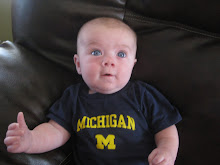But researchers argue that a shortage of eggs fueled by the payment ban is what's kept them from making the advances that prove their technique's real potential.Yeah. Right. You just have to forget that the technique is highly inefficient (remember Hwang Woo-Suk got his hands on approximately 2,000 human eggs and produced no cloned human embryos) and a complete waste of time and resources and then realize that if scientists got whatever they wanted then these treatments from the cells of cloned human embryos would magically be within our reach.
"You need to have enough eggs to make this thing work, and when you have enough eggs it does work," said Dr. Sam Wood, chief executive of La Jolla-based Stemagen Corp.
"If these guidelines weren't in place, we'd already have many (stem cell) lines and be much closer to a treatment for devastating illnesses for which these are so well suited," Wood said.
Grace Hammond has a piece in the Jackson Hole Planet on the aging population of abortion providers in western states. She starts off by telling the story of a woman who drank massive amounts of alcohol to terminate her pregnancy.
“I drank [the pregnancy] to death under the basketball hoop,” she said. “I nearly drank me dead, too. I had to find that balance between it dying and me dying, you know?”Why is “the pregnancy” in []? My guess is the woman in question used different words, like “the baby” or “my child” to describe what she was drinking to death.
The Washington Post has a question and answer article with prolife blogger Barbara Curtis.
Here’s another case of umbilical cord blood successfully treating cerebral palsy.





No comments:
Post a Comment